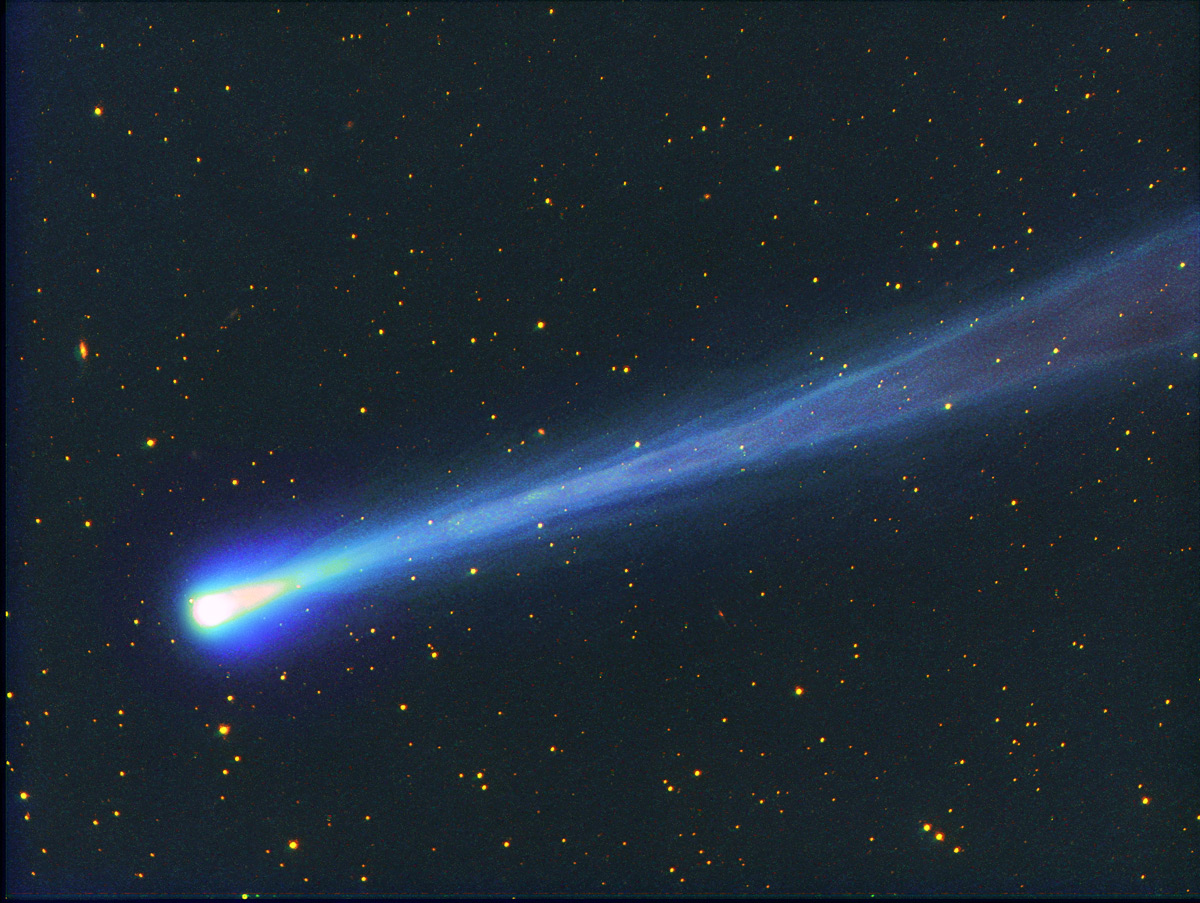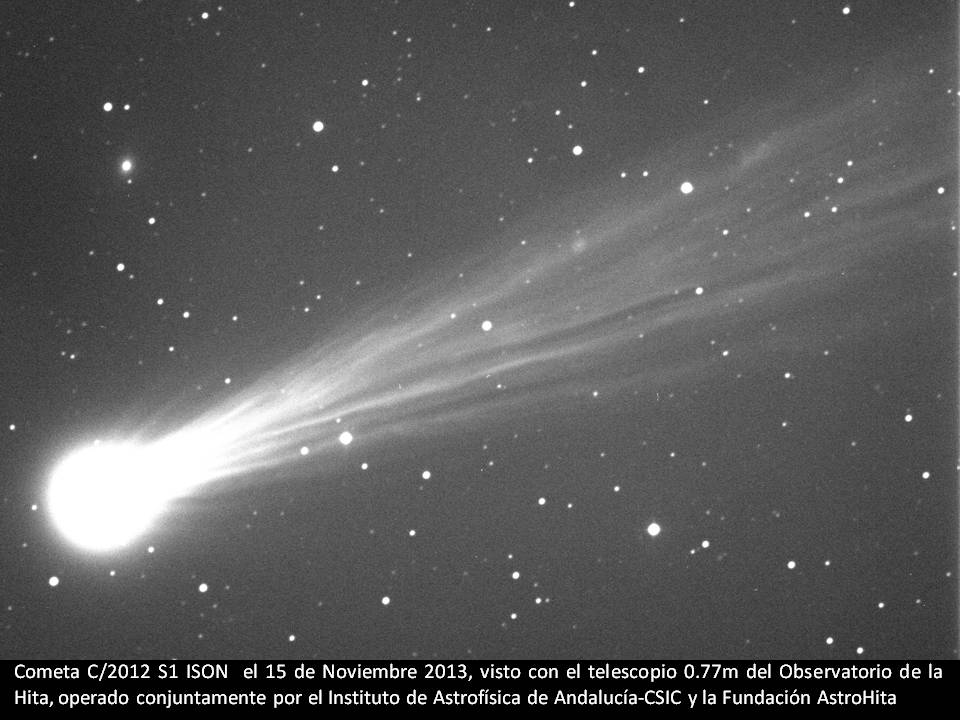It looks like you're using an Ad Blocker.
Please white-list or disable AboveTopSecret.com in your ad-blocking tool.
Thank you.
Some features of ATS will be disabled while you continue to use an ad-blocker.
share:
Hi Guys..
Recently lot of Rumor Say Ison Split in two..
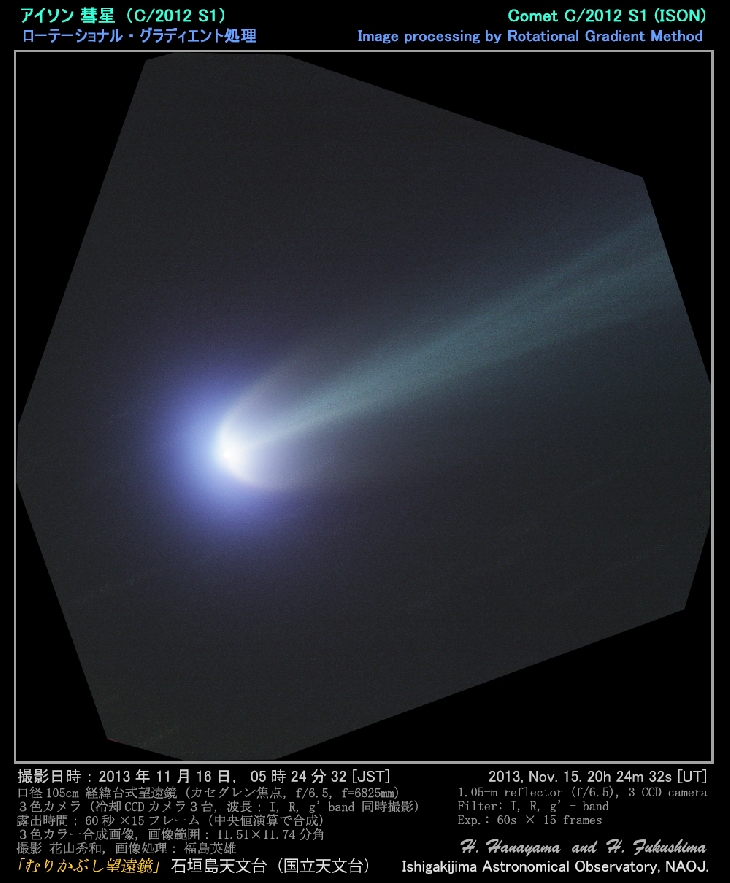
lunaticoutpost.com...
when i Read and search for the truth i find the answer according to "NASA Comet ISON Observing Campaign"..
for this time lot off disinformation agent..Be careful all
Recently lot of Rumor Say Ison Split in two..

www.facebook.com...
COMET C/2012 S1 (ISON) update November 16, 2013 from CBET 3715
H. Boehnhardt, C. Tubiana, N. Oklay, and J. B. Vincent, Max Planck Institute for Solar System Research, Katlenburg-Lindau; and U. Hopp, C. Ries, M. Schmidt, A. Riffeser, and C. Goessl, Astronomical Institute, Ludwig Maximilian University, Munich, report the detection of coma wings in Laplace-filter-processed CCD exposures of comet C/2012 S1 obtained with the 0.4-m telescope of the Mt. Wendelstein Observatory on Nov. 14.16-14.21 and 16.16-16.21 UT. The arclet-like wings appeared in opposite direction from the nucleus at position angles 15 and 195 deg on Nov. 14 and at p.a. 25 and 205 deg on Nov. 16. The coma wings extended straight from the nucleus for about 4700 km on Nov. 14 and 13500 km on Nov. 16 on either side of the extended radius vector and continued in streamers of the plasma tail. No coma wings were found in similar exposures obtained on Nov. 13. The coma wings suggest the presence of two or more sub-nuclei with individual expanding atmospheres in the overall cometary coma and may indicate recent nucleus splitting in the comet.
lunaticoutpost.com...
when i Read and search for the truth i find the answer according to "NASA Comet ISON Observing Campaign"..
www.isoncampaign.org...
One of our primary functions as coordinators of the Comet ISON Observing Campaign is to encourage and foster data sharing and discussion regarding comet C/2012 S1 (ISON). This brief blog post is to do just that.
There is some discussion over a report that has been made in which the authors describe “ coma wings [that] suggest the presence of two or more sub-nuclei” in Laplacian-filtered comet ISON images. This is a report that has been made by some respected scientists, and thus the CIOC team are definitely taking the report seriously. Indeed, as we have commented, comet ISON’s recent dramatic outburst could absolutely be the result of fragmentation of its nucleus. However, it could equally likely be the result of the expect increase in activity as it continues to approach the Sun. Both of these are possibilities that we have outlined out on this site.
We encourage more observations and analysis, but do urge caution with this latest report. The “wings” that the authors describe certainly could be the result of fragmentation, as so-called arclets are indeed correlated with fragmentation events. However, other possibilities exist:
1. Their appearance is remarkably symmetrical, which leads us to be a little more skeptical that they could be the result of a fragmentation. Fragmentation of cometary nuclei is typically an asymmetrical event, often with fragments trailing in the comet's tail, as was the case with 73P/Schwassmann–Wachmann and C/1996 B2 (Hyakutake), for example.
2. Prior to this outburst, several so-called “jets” had been reported in the area of activity that seems to be the source of these wings and thus it is possible that we are seeing enhanced dust emission due to jets in ISON’s nucleus.
3. We could simply be seeing solar wind ion tail structures, perhaps after some solar wind interaction event, for example with a coronal mass ejection or a co-rotating interaction region, or some other solar wind density enhancement. Indeed, spacecraft observations certainly indicate such interactions to have happened (this will be the source of a bog post later this week), but whether or not that interaction caused this new feature is still unknown.
The CIOC Team supports and encourages reports such as this, and we certainly monitor them closely. Our motivation for this blog post is to urge this discussion to continue, and we strongly encourage further data analysis efforts and a community-wide sharing of information on this and related subjects.
For now we continue to monitor the situation, to see which one of these scenarios is occurring. If the comet has fragmented, we should see some dramatic changes in the next few days. Typically we expect a large increase in brightness followed then by a dramatic decrease in the comet's brightness in these situations. If instead jets are the cause, we expect the "wings" to persist and grow. If the behavior is driven by the solar wind then we should see continual changes as the solar wind changes. This is monitored by a number of spacecraft 24/7 and reliable solar wind models, so should be possible to verify.
for this time lot off disinformation agent..Be careful all
edit on 17-11-2013 by cheesy because: (no reason given)
In the first picture with the wings, it kind of looks like an Angel.......spooky.
The 3rd picture looks an awful lot like the flying star transporting a man from the religious painting "The Crucifixion.
Thought some members would enjoy this too
edit on 17-11-2013 by aboutface because: (no reason given)
reply to post by cheesy
Great post!!! The mysteries of this comet are blowing me away! Just when I get use to one fact, here comes another just as odd! I will be so glad when the clouds are gone from my area so I can actually get some pictures!
Great post!!! The mysteries of this comet are blowing me away! Just when I get use to one fact, here comes another just as odd! I will be so glad when the clouds are gone from my area so I can actually get some pictures!
Won't the comet increase speed as it whips around the sun as well?
edit on 17-11-2013 by AbleEndangered because: typo
Well, now it looks like the blue kachina. It even has a mask on the face of it
reply to post by aboutface
Wow.
SO covers the whole gambit quite neatly and makes some interesting correlations along the way.
Everything's connected.
Wow.
SO covers the whole gambit quite neatly and makes some interesting correlations along the way.
Everything's connected.
edit on 17-11-2013 by sageturkey because: (no reason given)
donlashway
reply to post by cheesy
Try Bruce Gary's site?
Bruce Gary
Video, pics and data updates daily.
wow thats very Informatif sir.TQ So much..
this is From The Site..
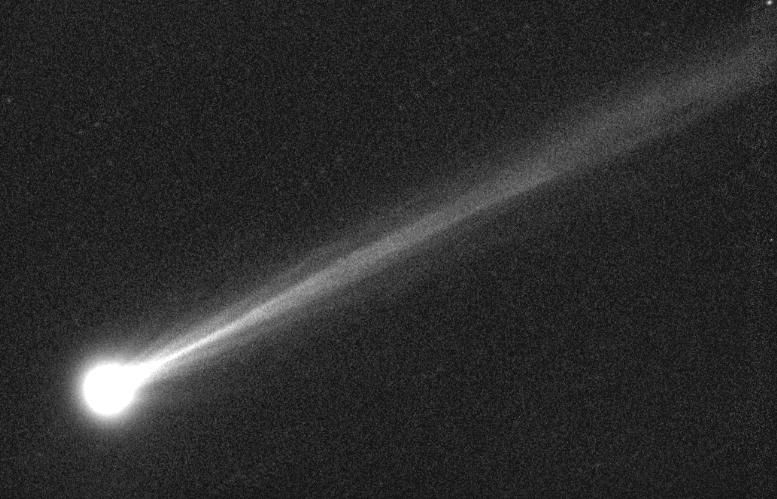
Measurements on several dates (after reappearing from behind the sun) show that the comet's inner coma is brightening at a lower rate than expected, as if the activity level on the nucleus surface is not changing (or possibly decreasing) as it approaches the sun
TQ Once again!
aboutface
Thought some members would enjoy this too
edit on 17-11-2013 by aboutface because: (no reason given)
Yes It All Connected! What a great Video!
AbleEndangered
Won't the comet increase speed as it whips around the sun as well?
edit on 17-11-2013 by AbleEndangered because: typo
Yes Of Course..Sun Gravity Pull Ison so Much..
this live Current Distance Etc
www.cometisonnews.com...
edit on 17-11-2013 by cheesy because: (no reason given)
AbleEndangered
Won't the comet increase speed as it whips around the sun as well?
edit on 17-11-2013 by AbleEndangered because: typo
Yes - incredibly so.
I've seen reports ranging from 850,000 mph on the low end to 1,000,000 mph at or right after perihelion.
Yes, that's million with a capital M.
Astonishing, huh?
edit on 11/17/2013 by Riffrafter because: (no reason given)
reply to post by cheesy
Cheesy.. I think you are too heavily invested in this and your "respect at ATS" to remain in any way objective about this any further. Thanks for the links and information however but please remain open minded and allow for the possibility it may have actually done what the images suggest it has.
Cheesy.. I think you are too heavily invested in this and your "respect at ATS" to remain in any way objective about this any further. Thanks for the links and information however but please remain open minded and allow for the possibility it may have actually done what the images suggest it has.
GArnold
reply to post by cheesy
Cheesy.. I think you are too heavily invested in this and your "respect at ATS" to remain in any way objective about this any further. Thanks for the links and information however but please remain open minded and allow for the possibility it may have actually done what the images suggest it has.
Yes Sir Of Course Much2 Sory for that..
reply to post by cheesy
another great Frgment Picture Ison Get Hot!
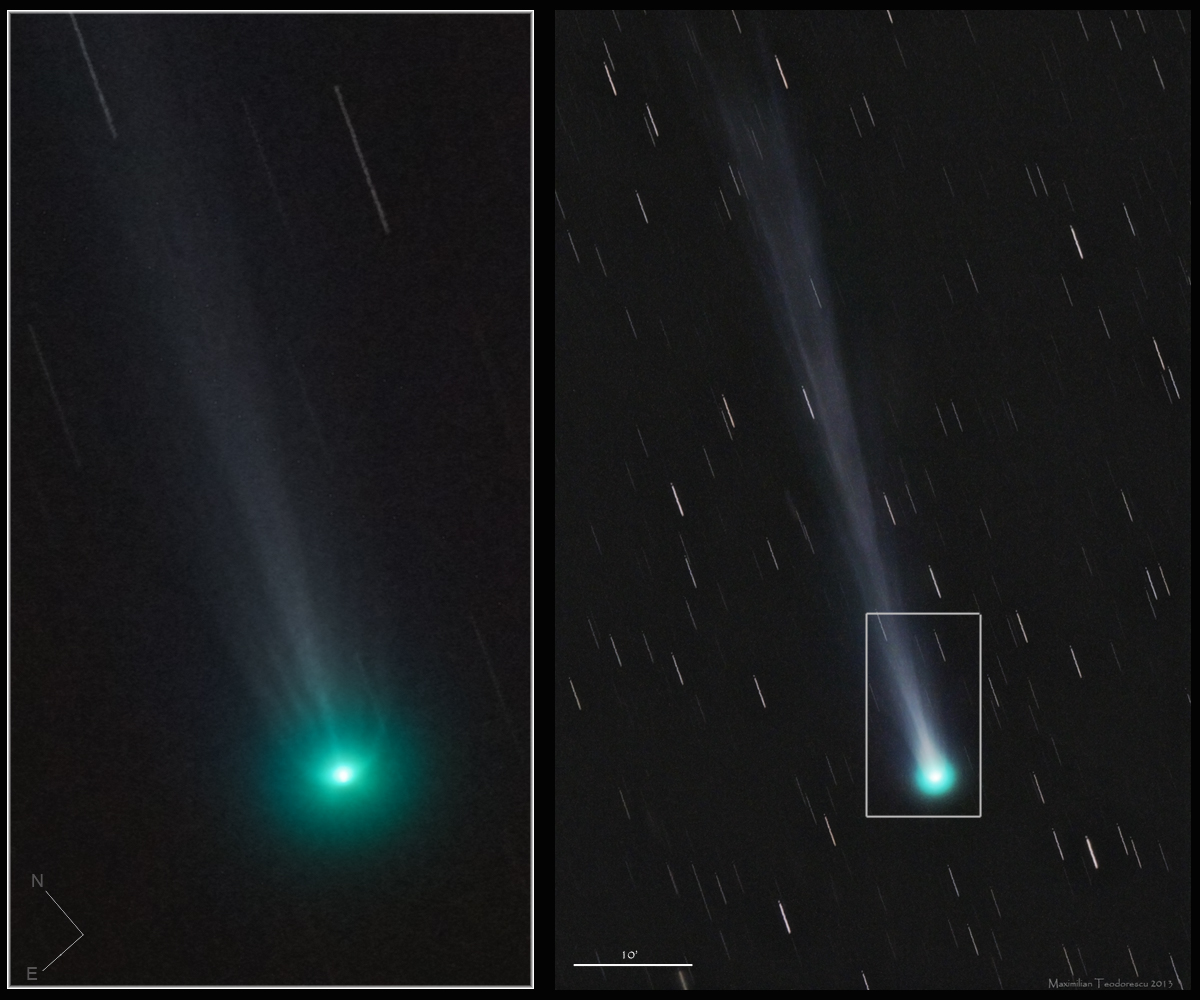
Taken by Maximilian Teodorescu on November 16, 2013 @ Dumitrana, Romania
another great Frgment Picture Ison Get Hot!

Taken by Maximilian Teodorescu on November 16, 2013 @ Dumitrana, Romania
reply to post by cheesy
Great pics Cheesy!
Do you know if those two pics were taken at or near the same time?
The one on the left looks really amazing. Seems it's "heating up" indeed...
Great pics Cheesy!
Do you know if those two pics were taken at or near the same time?
The one on the left looks really amazing. Seems it's "heating up" indeed...
new topics
-
Anti-Government Protest in Serbia
Social Issues and Civil Unrest: 2 hours ago -
The Effects of Electric Fields and Plasma on Plant Growth
Science & Technology: 2 hours ago -
The Daily Mail trying to imply “it’s aliens”
Dissecting Disinformation: 10 hours ago -
Swarms of tiny 'ant-like' robots lift heavy objects and navigate obstacles
Science & Technology: 11 hours ago
top topics
-
The Carpet Coating that Attacked the Environment
Medical Issues & Conspiracies: 16 hours ago, 15 flags -
NYPD Chief Jeffrey Maddrey Resigns - Forced Officers to Give Sex for Overtime Pay and Favors.
Posse Comitatus: 12 hours ago, 9 flags -
Swarms of tiny 'ant-like' robots lift heavy objects and navigate obstacles
Science & Technology: 11 hours ago, 5 flags -
The Daily Mail trying to imply “it’s aliens”
Dissecting Disinformation: 10 hours ago, 4 flags -
The Effects of Electric Fields and Plasma on Plant Growth
Science & Technology: 2 hours ago, 4 flags -
Anti-Government Protest in Serbia
Social Issues and Civil Unrest: 2 hours ago, 3 flags
active topics
-
Statements of Intent from Incoming Trump Administration Members - 2025 to 2029.
2024 Elections • 49 • : WeMustCare -
Incoming TRUMP Admin will Declare a National Emergency to Mass Deport People Here Illegally.
Social Issues and Civil Unrest • 119 • : WeMustCare -
The Effects of Electric Fields and Plasma on Plant Growth
Science & Technology • 3 • : ChaoticOrder -
-@TH3WH17ERABB17- -Q- ---TIME TO SHOW THE WORLD--- -Part- --44--
Dissecting Disinformation • 3779 • : duncanagain -
Democrat Leader Hakeem Jeffries Promotes HATE After 2nd Attempt to Murder Trump in 2024.
US Political Madness • 43 • : BernnieJGato -
U.S. Officially Withdraws From the World Health Organization
Breaking Alternative News • 73 • : WeMustCare -
‘Something horrible’: Somerset pit reveals bronze age cannibalism
Ancient & Lost Civilizations • 13 • : CosmicFocus -
Democrat New York Mayor ERIC ADAMS INDICTED on Federal Corruption Charges.
Mainstream News • 40 • : marg6043 -
JOSEPH BIDEN Says Democrat Coup Leaders Forced Him to Resign the Presidency - Eff 1.20.2025.
2024 Elections • 56 • : xuenchen -
Post A Funny (T&C Friendly) Pic Part IV: The LOL awakens!
General Chit Chat • 7944 • : underpass61

